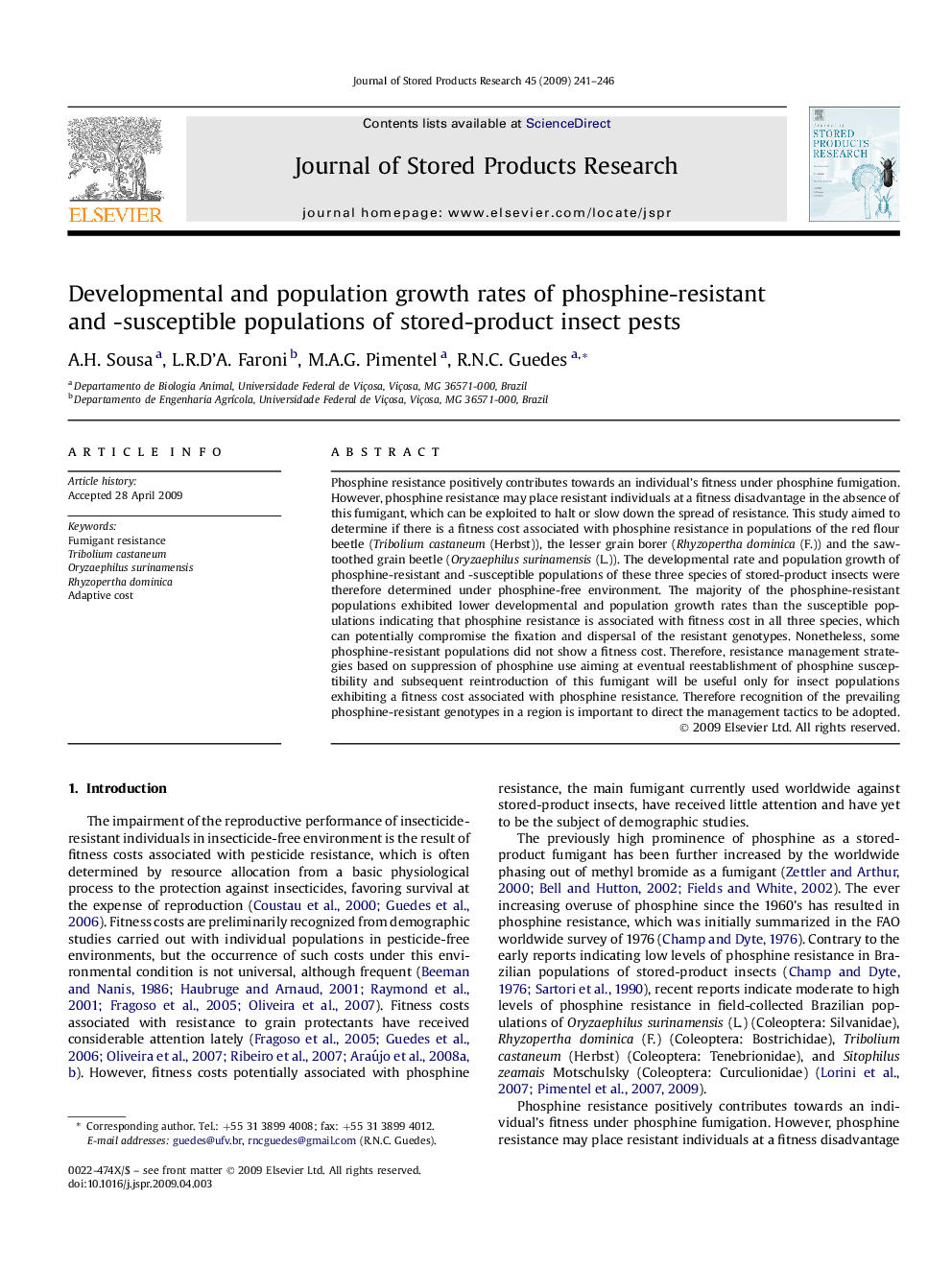| Article ID | Journal | Published Year | Pages | File Type |
|---|---|---|---|---|
| 4517327 | Journal of Stored Products Research | 2009 | 6 Pages |
Phosphine resistance positively contributes towards an individual's fitness under phosphine fumigation. However, phosphine resistance may place resistant individuals at a fitness disadvantage in the absence of this fumigant, which can be exploited to halt or slow down the spread of resistance. This study aimed to determine if there is a fitness cost associated with phosphine resistance in populations of the red flour beetle (Tribolium castaneum (Herbst)), the lesser grain borer (Rhyzopertha dominica (F.)) and the sawtoothed grain beetle (Oryzaephilus surinamensis (L.)). The developmental rate and population growth of phosphine-resistant and -susceptible populations of these three species of stored-product insects were therefore determined under phosphine-free environment. The majority of the phosphine-resistant populations exhibited lower developmental and population growth rates than the susceptible populations indicating that phosphine resistance is associated with fitness cost in all three species, which can potentially compromise the fixation and dispersal of the resistant genotypes. Nonetheless, some phosphine-resistant populations did not show a fitness cost. Therefore, resistance management strategies based on suppression of phosphine use aiming at eventual reestablishment of phosphine susceptibility and subsequent reintroduction of this fumigant will be useful only for insect populations exhibiting a fitness cost associated with phosphine resistance. Therefore recognition of the prevailing phosphine-resistant genotypes in a region is important to direct the management tactics to be adopted.
